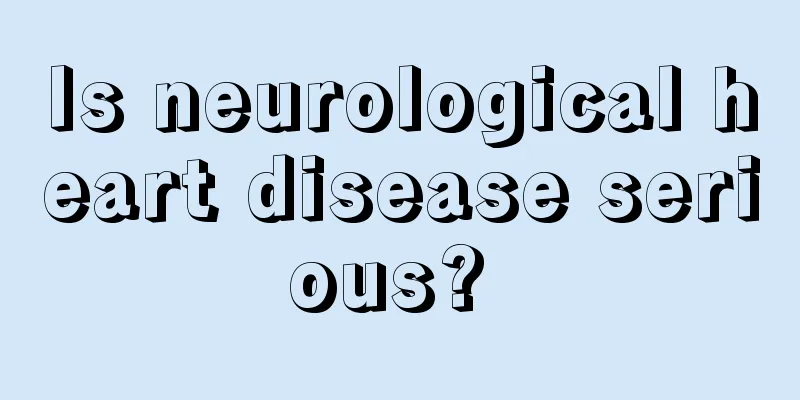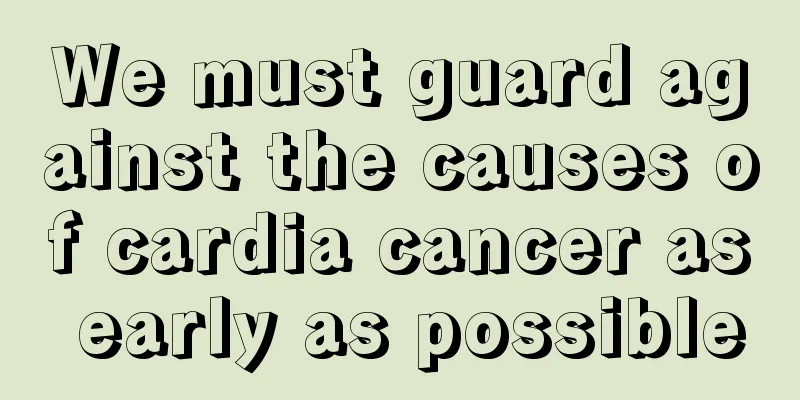Is neurological heart disease serious?

|
Heart disease is a common disease in life. With the deterioration of the modern environment and the increase of pressure, the number of people suffering from heart disease has increased greatly, which has brought certain pressure to modern medical care. There are many specific types of heart disease. Among them, the harm of neurological heart disease cannot be underestimated. It has more symptoms and more uncertainty when it occurs. Let’s take a look at whether neurological heart disease is serious? What are the symptoms? 1. Heart palpitations The most common symptoms are conscious heartbeat, precordial pulsation and discomfort, which are more obvious during exercise or emotional excitement. These are purely subjective feelings of the patient, and no objective examination has found anything. However, sometimes a strong apical beat or sinus tachycardia can be seen, occasionally atrial or ventricular premature contractions or brief paroxysmal supraventricular tachycardia. Mild activity can cause the heart rate to increase significantly and disproportionately, and patients often dare not move because of this. 2. Precordial pain They think it is angina pectoris, but its location and nature are different from typical angina pectoris. The pain site is variable and not fixed, mostly limited to the apex of the heart and a very small area under the left breast. It can also be under the sternum, on the right chest, or on the chest and back. The pain may be a stabbing or knife-like pain lasting for a few seconds, or a mild dull pain that lasts for hours or days. Sometimes the pain radiates to the outer side of the left forearm or fingers. The pain is not related to exertion and only occurs after activity, mental fatigue, or even at rest. Some patients can relieve the pain by pressing the painful area with their hands or lying on their left side. Other patients are extremely nervous and dare not change their body position, or have tender points in the ribs, soft tissues and surface skin in the precordial area. 3. Difficulty breathing Patients often feel a lack of air, difficulty breathing, shallow and irregular breathing, accompanied by chest pain. Attacks are more likely to occur in crowded or poorly ventilated places. They often feel comfortable after sighing or breathing through a window to breathe fresh air. However, deep breathing for a long time may cause symptoms such as numbness of the limbs, dizziness, vertigo, tremors and even convulsions of the hands and feet, which is the so-called hyperventilation syndrome. 4. Symptoms of neurasthenia Patients often complain of fatigue, dizziness, headache, flushed and burning sensation in the face, insomnia, nightmares, anxiety, irritability, loss of appetite, nausea and vomiting, unlocalized muscle twitching, sweating in the armpits and palms, numbness in the hands and feet, etc. |
<<: What are some quick pain relief methods for neuralgic toothache?
>>: How to deal with alkaline stains on the wall?
Recommend
How to soften hair sharing 2 methods
Hair is naturally soft or hard, and people with h...
Are there any sequelae of encephalitis?
If encephalitis is not effectively treated, the s...
How to effectively treat diaphragm spasm?
When treating diaphragm spasm, of course, you sho...
Calcification of thyroid nodules
When it comes to the disease of thyroid nodule ca...
Breastfed babies have food accumulation, be careful of these symptoms
In the eyes of most people, breastfeeding after a...
Indications for prostate cancer surgery and chemotherapy
Prostate cancer is extremely harmful to men. How ...
What to do if your singing voice is too nasal
Some friends have a heavy nasal tone when they si...
How is renal artery stenosis treated?
Renal artery stenosis causes renal vascular hyper...
Cured by Gallbladder Cancer
Gallbladder cancer has an insidious onset, lacks ...
What are the high-risk groups for prostate cancer?
Prostate cancer is the most common malignant tumo...
What to do if ovarian cancer metastasizes to the lymph nodes
What should I do if ovarian cancer metastasizes t...
How long can you live with prostate cancer
Prostate cancer is a malignant tumor disease with...
Should a beginner use eyebrow pencil or eyebrow powder?
When a novice puts on makeup, he or she will feel...
What are the symptoms of bladder cancer before death?
Bladder cancer is a malignant tumor that originat...
Briefly describe the 4 early symptoms of brain cancer
The early clinical symptoms of brain cancer are m...









